 W
WAdam of Bremen was a German medieval chronicler. He lived and worked in the second half of the eleventh century. Adam is most famous for his chronicle Gesta Hammaburgensis ecclesiae pontificum. He was "one of the foremost historians and early ethnographers of the medieval period".
 W
WAdémar de Chabannes was an eleventh-century French monk, a historian, a musical composer and a successful literary forger.
 W
WThe Annals of Quedlinburg were written between 1008 and 1030 in the convent of Quedlinburg Abbey. In recent years a consensus has emerged that it is likely that the annalist was a woman. The annals are mostly dedicated to the history of the Holy Roman Empire; they also contain the first written mention of the name of Lithuania ("Litua"), dated to March, 1009. The original document has disappeared, surviving only as a 16th-century copy held in Dresden, but its contents endure as a scholarly resource.
 W
WSaint Anselm of Canterbury, also called Anselm of Aosta after his birthplace and Anselm of Bec after his monastery, was an Italian Benedictine monk, abbot, philosopher and theologian of the Catholic Church, who held the office of Archbishop of Canterbury from 1093 to 1109. After his death, he was canonized as a saint; his feast day is 21 April.
 W
WSaint Anselm of Lucca, born Anselm of Baggio, was a medieval bishop of Lucca in Italy and a prominent figure in the Investiture Controversy amid the fighting in central Italy between Matilda, countess of Tuscany, and Emperor Henry IV. His uncle Anselm preceded him as bishop of Lucca before being elected to the papacy as Pope Alexander II; owing to this, he is sometimes distinguished as Anselm the Younger or Anselm II.
 W
WBerengar of Tours, in Latin Berengarius Turonensis, was an 11th-century French Christian theologian and archdeacon of Angers, a scholar whose leadership of the cathedral school at Chartres set an example of intellectual inquiry through the revived tools of dialectic that was soon followed at cathedral schools of Laon and Paris. He came into conflict with Church authorities over the doctrine of transubstantiation of the Eucharist.
 W
WBruno of Cologne was the founder of the Carthusian Order, he personally founded the order's first two communities. He was a celebrated teacher at Reims, and a close advisor of his former pupil, Pope Urban II. His feast day is October 6.
 W
WBruno of Querfurt, also known as Brun and Boniface, was a Christian missionary bishop and martyr, who was beheaded near the border of Kievan Rus and Lithuania for trying to spread Christianity. He is also called the second "Apostle of the Prussians".
 W
WBurchard of Worms was the bishop of the Imperial City of Worms, in the Holy Roman Empire. He was the author of a canon law collection of twenty books known as the Decretum, Decretum Burchardi, or Decretorum libri viginti.
 W
WThe so-called Claudius Pontificals are the texts in British Library, Cotton Claudius A.iii, a composite manuscript of three separate pontificals, i.e. compilations of the services reserved for bishops, especially the coronation of kings. The first two date to the 11th century, the third to the 12th century.foll. 4-6, formerly bound with the Coronation Gospels, contain the "Æthelred confirmation" and the "Edward the Confessor confirmation". Claudius Pontifical I, foll. 31-86, 106-150 ; this early 11th-century book was owned by Wulfstan ; on fol. 31 a commemorative verse in Old English, informing us that this halungboc was bound at the expense of one Thureth, presumably a Northumbrian earl; Claudius Pontifical II, foll. 9-18, 87-105, mid 11th century, contains the Second Anglo-Saxon Ordo; Claudius Pontifical III, foll. 19-29, consists of the Third English Coronation Order, early to mid 12th century.
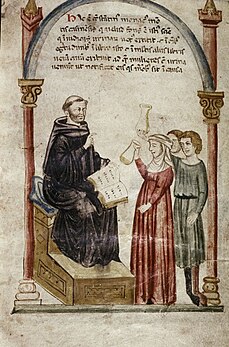 W
WConstantine the African was a physician who lived in the 11th century. The first part of his life was spent in North Africa and the rest in Italy. He first arrived in Italy in the coastal town of Salerno, home of the Schola Medica Salernitana, where his work attracted attention from the local Lombard and Norman rulers. Constantine then became a Benedictine monk, living the last decades of his life at the abbey of Monte Cassino.
Peter Damian was a reforming Benedictine monk and cardinal in the circle of Pope Leo IX. Dante placed him in one of the highest circles of Paradiso as a great predecessor of Saint Francis of Assisi and he was declared a Doctor of the Church in 1828. His feast day is 21 February.
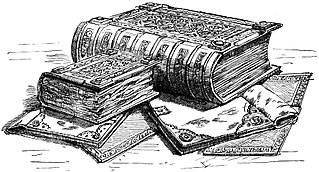 W
WDomesday Book is a manuscript record of the "Great Survey" of much of England and parts of Wales completed in 1086 by order of King William the Conqueror. The Anglo-Saxon Chronicle states:Then, at the midwinter [1085], was the king in Gloucester with his council .... After this had the king a large meeting, and very deep consultation with his council, about this land; how it was occupied, and by what sort of men. Then sent he his men over all England into each shire; commissioning them to find out "How many hundreds of hides were in the shire, what land the king himself had, and what stock upon the land; or, what dues he ought to have by the year from the shire."
 W
WEadmer or Edmer was an English historian, theologian, and ecclesiastic. He is known for being a contemporary biographer of his archbishop and companion, Saint Anselm, in his Vita Anselmi, and for his Historia novorum in Anglia, which presents the public face of Anselm. Eadmer's history is written to support the primacy of Canterbury over York, a central concern for Anselm.
 W
WEadwig Basan was an eleventh-century monk and scribe of Christ Church Canterbury, who worked on several manuscripts, including the Eadwig Gospels and Eadwig Psalter, both of which were named after him, and the Grimbald Gospels. He also made additions to the York Gospels, the Harley Psalter and the famous Vespasian Psalter, as well as writing several charters in the second and third decades of the eleventh century. It seems that many of his works have a common artist, which has led to the suggestion that he illustrated his manuscripts personally, although this cannot be verified; possibly he is represented by the figure of an anonymous monk kneeling at the feet of St Benedict in a miniature from the Eadwig Gospels. However, it is more likely that this monk was copied from a manuscript by Rabanus Maurus.
 W
WGregory of Catino was a monk of the Abbey of Farfa and "one of the most accomplished monastic historians of his age." Gregory died shortly after 1130, possibly in 1133.
 W
WBlessed Hermann of Reichenau, also known by other names, was an 11th-century Benedictine monk and scholar. He composed works on history, music theory, mathematics, and astronomy, as well as many hymns. He has traditionally been credited with the composition of "Salve Regina", "Veni Sancte Spiritus", and "Alma Redemptoris Mater", although these attributions are sometimes questioned. His cultus and beatification were confirmed by the Roman Catholic Church in 1863.
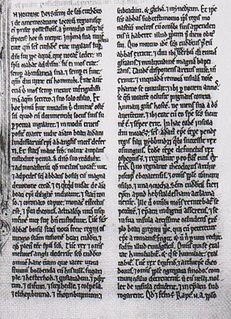 W
WThe Historia de Sancto Cuthberto is a historical compilation finished some time after 1031. It is an account of the history of the bishopric of St Cuthbert—based successively at Lindisfarne, Norham, Chester-le-Street and finally Durham—from the life of St Cuthbert himself onwards. The latest event documented is a grant by King Cnut, c. 1031. The work is a cartulary chronicle recording grants and losses of property as well as miracles of retribution, under a loose narrative of temporal progression. The text survives in three manuscripts, the earliest of which dates from around 1100. The original version of the text is not thought to be extant; rather, all surviving manuscripts are thought to be copies of an earlier but lost exemplar. The Historia is one of the important sources behind the higher quality expanded histories produced at Durham in the early 12th century, particularly the Historia Regum and Symeon of Durham's Libellus de Exordio.
 W
WNotker Labeo, also known as Notker the German or Notker III, was a Benedictine monk and the first commentator on Aristotle active in the Middle Ages. "Labeo" means "the thick-lipped one". Later he was named Teutonicus in recognition of his services to the German language.
 W
WLanfranc was a celebrated Italian jurist who renounced his career to become a Benedictine monk at Bec in Normandy. He served successively as prior of Bec Abbey and abbot of St Stephen in Normandy and then as Archbishop of Canterbury in England, following its Conquest by William the Conqueror. He is also variously known as Lanfranc of Pavia, Lanfranc of Bec, and Lanfranc of Canterbury.
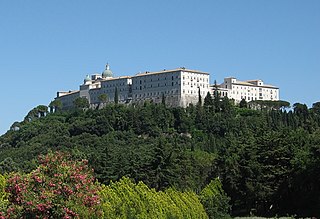 W
WAmatus of Montecassino, was a Benedictine monk of the Abbey of Montecassino who is best known for his historical chronicles of his era. His History of the Normans, is one of three principle primary sources for the Norman Conquest of southern Italy--the other two being the histories of William of Apulia and Geoffrey Malaterra. Amatus describes the Normans from the perspective of his abbey, one of the most important religious and cultural centers in Italy at the time. His history is the earliest extant account of the Norman sieges of Bari and Salerno, their conquest of Sicily, and the careers of both Robert Guiscard and Richard Drengot, as well as the Gregorian Reforms seen from the papal point of view.
 W
WSampiro was a Leonese cleric, politician, and intellectual, one of the earliest chroniclers of post-conquest Spain known by name. He was also the Bishop of Astorga from 1034 or 1035 until his death.
 W
WSigebert of Gembloux was a medieval author, known mainly as a pro-Imperial historian of a universal chronicle, opposed to the expansive papacy of Gregory VII and Pascal II. Early in his life he became a monk in the Benedictine abbey of Gembloux.
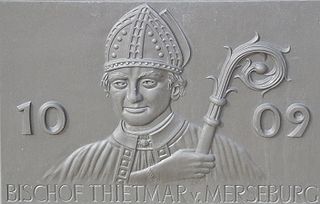 W
WThietmar, Prince-Bishop of Merseburg from 1009 until his death, was an important chronicler recording the reigns of German kings and Holy Roman Emperors of the Ottonian (Saxon) dynasty. Two of Thietmar's great-grandfathers, both referred to as Liuthar, were the Saxon nobles Lothar II, Count of Stade, and Lothar I, Count of Walbeck. They were both killed fighting the Slavs at the Battle of Lenzen.
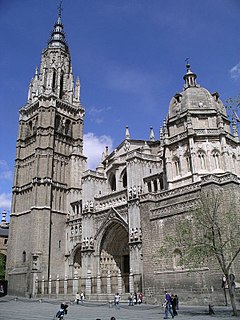 W
WThe Treatise of Garcia of Toledo, also known as Tractatus Garsiae Tholetani canonici de Albino et Rufino or The Translation of the Relics of Saints Gold and Silver, was an 11th-century treatise directed against the corruption of the Roman curia. Describing the continuous feasting of the Pope, his cardinals, and his curia, the Treatise is essentially a satirical description of the actual historical visit of Bernard de Sedirac, Archbishop of Toledo, to Rome in May 1099.
 W
WWilliam of Jumièges was a contemporary of the events of 1066, and one of the earliest writers on the subject of the Norman conquest of England. He is himself a shadowy figure, only known by his dedicatory letter to William the Conqueror as a monk of Jumièges. Since he also mentions that he was an eyewitness of some events from the reign of Duke Richard III (1026-7), it seems reasonable to assume that he was born some time about the year 1000. He probably entered the monastery during the first quarter of the eleventh century and received his education from Thierry de Mathonville. According to Orderic Vitalis, William's nickname was "Calculus". The meaning behind this nickname is unknown. His death, after 1070, is unrecorded. He was a Norman writing from a Norman point of view. Although only a monk with evidently no military training, he wrote with pride in the accomplishments of his people.
 W
WWipo of Burgundy was a priest and writer. He was a chaplain to the Holy Roman Emperor Conrad II and may have acted as a tutor to his son Henry III, to whom he dedicated a number of works. His biography of Conrad II, entitled Gesta Chuonradi II imperatoris, is a key source for Conrad's reign.